#3dprintingrevolution
Explore tagged Tumblr posts
Text
youtube
The Global 3D bioprinting market is poised for remarkable growth, with projections estimating it will reach USD 7.33 billion by 2032, driven by a robust CAGR of 16.3% from 2024 to 2032. North America held a significant share of the market in 2023, with a valuation of approximately USD 633.6 million, reflecting strong adoption of 3D bioprinting technologies in research and healthcare. Meanwhile, the Asia-Pacific region is expected to witness the highest growth, with a CAGR exceeding 17.1% during the forecast period, propelled by increasing investments in healthcare infrastructure and technological advancements.
#3d#3dprinting#biology#bioprinting#bioprintingtech#3dprintinginnovation#medicaltechnology#futureofhealthcare#bioprintingmarket#techtrends2024#healthcareinnovation#bioengineering#3dprintingrevolution#regenerativemedicine#organprinting#tissueengineering#personalizedmedicine#medicalresearch#techcollaboration#innovationinbusiness#biotechIndustry#researchanddevelopment#medicaladvancements#technologyresearch#technologyrevolution#technologynews#technologyrevolutionprojects#technology#informationtechnology#itresearch
0 notes
Text
#3DPrinters#3DPrinting#Consumer3DPrinters#3DPrintingRevolution#Global3DPrinting#3DPrintTech#InnovativePrinting#3DTechnology#3DPrinterLeader#3DPrintingForAll#PrintIn3D#3DPrintInnovation#3DPrintingMadeEasy#Affordable3DPrinters#3DPrintingSolutions#3DPrintingWorld#NextGen3DPrinting#Home3DPrinting#3DPrintingCommunity#3DPrintYourDreams#3DPrintRevolution#Best3DPrinters#3DPrintDesign#CuttingEdge3DPrinters#FutureOfPrinting#3DPrintingForEveryone#Smart3DPrinters#3DPrintAtHome#Top3DPrinters#ConsumerPrintingTech
0 notes
Text
Additive Manufacturing: Revolutionizing The Future Of Production
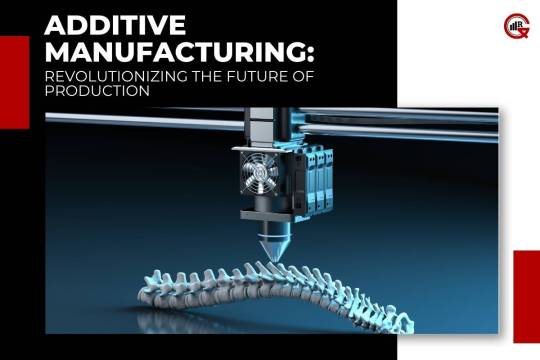
Additive manufacturing, also known as 3D printing, has emerged as a transformative technology with the potential to revolutionize the way we design, produce, and distribute goods. From rapid prototyping to custom manufacturing, manufacturing offers unprecedented flexibility, efficiency, and innovation across a wide range of industries. In this article, we delve into the world of manufacturing, exploring its history, applications, benefits, and prospects.
A Brief History of Additive Manufacturing
The concept of manufacturing dates back to the 1980s when the first 3D printing techniques were developed. Initially used for rapid prototyping in the aerospace and automotive industries, manufacturing has since evolved into a versatile manufacturing process capable of producing complex geometries with precision and efficiency. Over the years, advances in materials science, software development, and manufacturing technologies have expanded the capabilities of additive manufacturing, enabling its widespread adoption across various sectors.
Applications of Additive Manufacturing
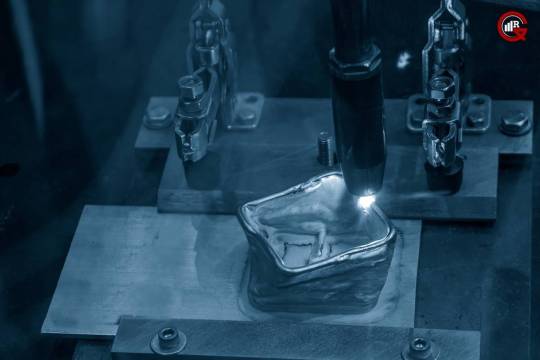
Manufacturing finds applications in diverse industries, including aerospace, automotive, healthcare, consumer goods, and architecture, among others. Some notable applications of manufacturing include:
Prototyping: Additive manufacturing allows engineers and designers to quickly iterate and refine product designs by producing physical prototypes with minimal lead time. This rapid prototyping capability accelerates the product development cycle and enables faster time-to-market for new products.
Custom Manufacturing: Manufacturing enables the production of customized parts and components tailored to specific customer requirements. Whether creating personalized medical implants, custom-fit prosthetics, or bespoke jewelry, manufacturing offers unparalleled flexibility in manufacturing highly individualized products.
Tooling and Jigs: Manufacturing is increasingly used for the rapid production of tooling, jigs, and fixtures used in manufacturing processes. By leveraging 3D printing technology, manufacturers can create lightweight, durable, and complex tooling solutions that improve efficiency, reduce lead times, and lower production costs.
Production Parts: Manufacturing is being adopted for the direct production of end-use parts and components in various industries. From aerospace components to automotive parts, manufacturing offers the potential to produce lightweight, high-performance components with intricate geometries and superior mechanical properties.
Benefits of Additive Manufacturing
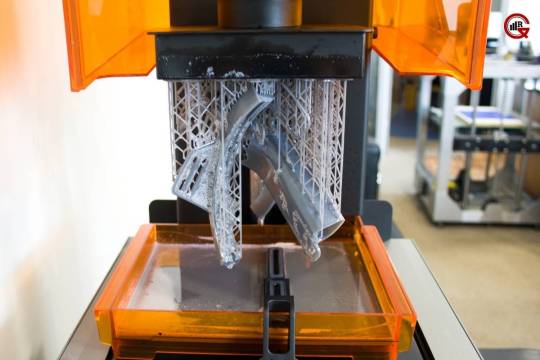
The adoption of such type of manufacturing method offers several compelling benefits for businesses and industries:
Design Freedom: Manufacturing enables the production of complex geometries and intricate designs that are difficult or impossible to achieve using traditional manufacturing methods. This design freedom allows engineers and designers to explore new possibilities and innovate without the constraints of conventional manufacturing processes.
Cost Savings: Manufacturing can reduce production costs by minimizing material waste, streamlining production workflows, and eliminating the need for costly tooling and molds. By producing parts on-demand and in-house, businesses can also reduce inventory costs and mitigate supply chain risks.
Rapid Iteration: The rapid prototyping capabilities of manufacturing enable engineers and designers to quickly iterate and refine product designs based on feedback and testing. This iterative design process accelerates innovation, reduces time-to-market, and enhances product quality and performance.
Customization: Manufacturing allows for the cost-effective production of customized products and components tailored to individual customer requirements. Whether creating personalized medical devices, consumer products, or industrial components, manufacturing enables mass customization at scale.
Future Prospects of Additive Manufacturing
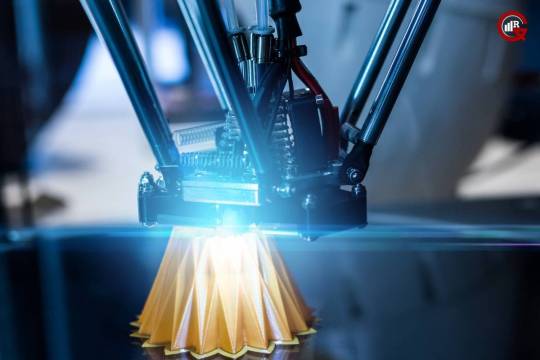
The future of additive manufacturing holds tremendous promise for continued innovation and advancement. Some key areas of development and research include:
Materials Innovation: Researchers are exploring new materials and composites optimized for manufacturing processes, including metals, polymers, ceramics, and biomaterials. These advanced materials offer enhanced mechanical properties, thermal stability, and biocompatibility, expanding the range of manufacturing applications.
Process Optimization: Ongoing research aims to improve the speed, accuracy, and efficiency of manufacturing processes through advancements in hardware, software, and process optimization techniques. From multi-material printing to automated post-processing, these developments promise to enhance productivity and scalability in amanufacturing.
Sustainability: Additive manufacturing has the potential to contribute to sustainability efforts by reducing material waste, energy consumption, and environmental impact compared to traditional manufacturing methods. Researchers are exploring bio-based materials, recycling techniques, and closed-loop manufacturing systems to further enhance the sustainability of manufacturing.
Industrial Adoption: As manufacturing technologies mature and production capabilities expand, we can expect to see increased adoption of manufacturing in industrial-scale production environments. From aerospace and automotive manufacturing to healthcare and construction, manufacturing will play a growing role in shaping the future of production.
Conclusion:
In conclusion, manufacturing represents a paradigm shift in manufacturing technology, offering unprecedented flexibility, efficiency, and innovation across industries. With its ability to produce complex geometries, customize products, and streamline production workflows, manufacturing is poised to transform the way we design, produce, and distribute goods in the 21st century. As research and development efforts continue to push the boundaries of additive manufacturing technology, we can anticipate further advancements, applications, and opportunities that will shape the future of production for years to come.
#AdditiveManufacturing#3DPrintingRevolution#InnovationInProduction#CustomizedManufacturing#SustainableManufacturing
0 notes
Text
Top 4 Advantages of 3D Printing in Supply Chain Management "
Originally Published on: SpendEdge |Top 4 Benefits of 3D Printing in Supply Chain Management
In recent times, 3D printing technology has garnered significant attention, offering a multitude of benefits that can revolutionize a company's supply chain management. Forward-thinking enterprises have recognized the potential of 3D printing to address logistical challenges and optimize their supply chains. The escalating demands of customers have placed immense pressure on supply chains, necessitating precision in both timeliness and quality. While in the past, consumers were content with waiting for a week to receive their products, the rise of one-day or even same-day delivery expectations has made meeting customer demands a formidable challenge. So, what are the advantages of 3D printing technology that can empower companies to navigate this ever-growing customer demand while simultaneously reducing costs?
Advantages of 3D Printing in Supply Chain Management:
Enhanced Mobility:
One of the most transformative benefits of 3D printing technology is its mobility. Instead of undertaking the cumbersome process of acquiring land for infrastructure, purchasing machinery, and managing assets, all that is required for 3D printing is a 3D printer and some input materials like plastics, powders, and resins. This grants customers the remarkable ability to customize their goods, even with instant deliveries. E-commerce giants like Amazon stand to benefit significantly from this technology, which empowers consumers.
Virtual Inventory:
Currently, companies must maintain physical inventories of finished goods in various SKUs, each coming in different shapes and sizes. This can consume substantial space and contribute to inventory and warehousing costs. However, with 3D printers, raw materials primarily consist of plastics and resins. Rather than stockpiling various types of goods, a 3D printer can instantly produce the required items on demand. Virtual inventory represents one of the exceptional advantages of 3D printing, enhancing the efficiency of supply chain management.
Manufacturing Aids:
The manufacturing industry operates in a highly competitive environment, with most companies adhering to management principles like Just-in-Time (JIT). Additive manufacturing, enabled by 3D printing, allows companies to create spare parts, tools, and other fixtures to expedite assembly lines by producing durable and precise components. This represents an extraordinary advantage of 3D printing, contributing to the maintenance of optimal manufacturing efficiency. For specific products, it can also accelerate time-to-market, thereby bolstering inventory turnover.
Reduction in Transportation and Logistics Costs:
The reduction in transportation and logistics costs is one of the most compelling advantages of 3D printing. This technology facilitates the decentralization of manufacturing processes. The conventional practice of having a single manufacturing hub distributing products worldwide adds to product costs due to increased logistics and transportation expenses. Since 3D printers excel at producing products, even those with moving parts, the assembly phase can be eliminated, resulting in savings on labor and transportation expenses.
The impact of 3D printing on supply chain management is undeniable, offering a transformative approach that enhances mobility, virtualizes inventory, aids manufacturing, and significantly reduces transportation and logistics expenditures. Embracing this technology can position companies at the forefront of modern supply chain practices, meeting customer expectations while optimizing operations.
Feel free to reach out to us for further information or assistance in implementing these innovative solutions in your supply chain management.
0 notes
Text
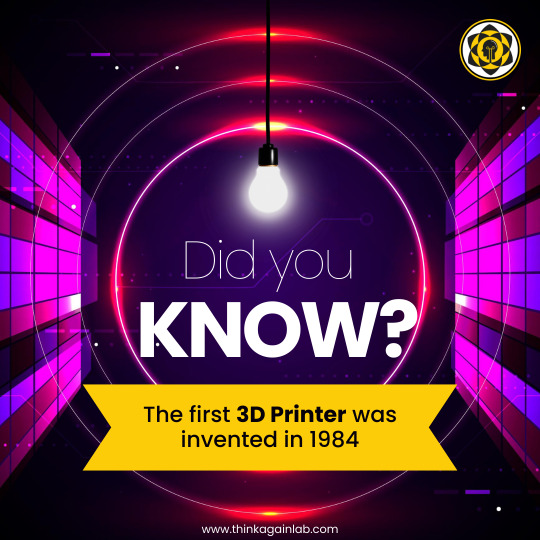
Ready to dive into the revolutionary world of 3D printing? Register now to trace the incredible journey that began in 1984. Laying the foundation for a technological marvel that continues to shape the future!
Register Now
For more information, you can visit our Instagram & Facebook, Or Contact us: +91 7908369443
#RegisterNow#ThinkAgainLab#3DPrintingRevolution#TechnologicalInnovation#IncredibleInventions#TechTimeTravel#ExploringThePast#PrintingTheFuture#TechEnthusiasts
1 note
·
View note
Photo

#3dprinting #3dmodeling #3Ddesign #AI #futuristictech #innovation #3Dtech #3Dprintingtech #3Drendering #3Dvisualization #3Dsoftware #3Dprintingindustry #3Dprintingsolutions #3Dprintingrevolution #3Dprintinginnovations #3Dprintingworld #3Dprintingtechnology #3Dprintinginnovation #3Dprintingforbeginners Ai 3d printing is a revolutionary technology that uses artificial intelligence (AI) algorithms to generate 3D models that can be printed. It offers a wide range of possibilities to 3D printing, from producing unique designs to automating the entire workflow. This technology has the potential to revolutionize the 3D printing industry and make it accessible to everyone. https://www.instagram.com/p/CosC1EJKquN/?igshid=NGJjMDIxMWI=
#3dprinting#3dmodeling#3ddesign#ai#futuristictech#innovation#3dtech#3dprintingtech#3drendering#3dvisualization#3dsoftware#3dprintingindustry#3dprintingsolutions#3dprintingrevolution#3dprintinginnovations#3dprintingworld#3dprintingtechnology#3dprintinginnovation#3dprintingforbeginners
0 notes
Video
youtube
"Building Tomorrow: Inside Europe's Largest 3D Printed Wonder, The Wave ...
#youtube#WaveHouse 3DPrintingRevolution FutureArchitecture InnovationInConstruction SustainableDesign CuttingEdgeTechnology DataCenterOfTomorrow Arch
0 notes
Text
Next-Gen Manufacturing: Cold Spray Additive Market to Hit $4.8B by 2034
Cold Spray Additive Manufacturing Market is reshaping industries with its innovative approach to creating and repairing components. This technology uses high-velocity metal powders to deposit materials without melting, preserving material integrity and reducing thermal distortion.
To Request Sample Report : https://www.globalinsightservices.com/request-sample/?id=GIS10915 &utm_source=SnehaPatil&utm_medium=Article
In 2023, the market reached an estimated volume of 320 million metric tons, with projections to hit 500 million metric tons by 2033. The aerospace and defense segment leads, commanding a 45% market share due to its demand for lightweight, durable components. Automotive applications follow with 30%, focusing on enhanced part durability and cost-effective manufacturing. Sectors like electronics (12%) and medical (8%) are also leveraging the precision and reliability of cold spray technology.
North America dominates the market, supported by advanced industrial infrastructure and significant investments in aerospace and defense technologies. Europe follows closely, with Germany at the forefront in automotive and aerospace applications. The Asia-Pacific region is emerging as a growth hub, driven by expanding manufacturing capabilities in China and India.
Market segmentation highlights high-pressure and low-pressure cold spray systems, with applications in corrosion resistance, wear protection, and thermal conductivity. Leading players like General Electric, Airbus, and Boeing are advancing the market with cutting-edge innovations and R&D investments.
The competitive landscape is influenced by regulatory frameworks, particularly around environmental sustainability and safety standards. Future growth is projected at a 15% CAGR, driven by technological advancements like AI process optimization and IoT-enabled monitoring. While challenges such as high initial costs and the need for skilled labor remain, the integration of cold spray into sustainable and efficient production systems offers immense opportunities for industries worldwide.
#ColdSprayTech #AdditiveManufacturing #AerospaceInnovation #AdvancedMaterials #SustainableManufacturing #LightweightSolutions #DefenseTech #AutomotiveTrends #FutureOfManufacturing #KineticSpray #ThermalSpray #SmartManufacturing #IndustrialInnovation #3DPrintingRevolution #TechForSustainability
0 notes
Photo

What is it you ask? Clearly, it's a 3D model of the clitoris propped up against a very large grapefruit. Big thanks to @foolsfeast_ for getting me some clitorises for my conference pretention this summer. (The grapefruit came from Costco.) #clitoris #clitorisliteracy #clitorate @thisisavulva #love #3dprinting #3dprintingrevolution — view on Instagram http://bit.ly/2KDhyCw
0 notes
Text
3D Printing Medical Devices Market Growth Analysis by Size, Share & Forecast to 2030 | GQ Research
3D Printing Medical Devices market is set to witness remarkable growth, as indicated by recent market analysis conducted by GQ Research. In 2023, the global 3D Printing Medical Devices market showcased a significant presence, boasting a valuation of US$ 3.23 Billion. This underscores the substantial demand for 3D Printing Medical Devices technology and its widespread adoption across various industries.
Get Sample of this Report at: https://gqresearch.com/request-sample/global-3d-printing-medical-devices-market/

Projected Growth: Projections suggest that 3D Printing Medical Devices market will continue its upward trajectory, with a projected value of US$ 7.96 Billion by 2030. This growth is expected to be driven by technological advancements, increasing consumer demand, and expanding application areas.
Compound Annual Growth Rate (CAGR): The forecast period anticipates a Compound Annual Growth Rate (CAGR) of 16.95%, reflecting a steady and robust growth rate for 3D Printing Medical Devices market over the coming years.
Technology Adoption: The adoption of 3D printing technology in the medical devices market has experienced significant growth due to its ability to produce patient-specific implants, prosthetics, surgical instruments, and anatomical models. Healthcare providers are increasingly embracing this technology to streamline processes, reduce lead times, and enhance patient outcomes. Moreover, regulatory agencies' recognition of 3D-printed medical devices further accelerates adoption, ensuring compliance with safety and quality standards.
Application Diversity: The versatility of 3D printing enables the fabrication of a wide range of medical devices tailored to specific patient needs. From orthopedic implants to dental prosthetics and organ replicas for surgical planning, the technology caters to diverse healthcare requirements. Furthermore, advancements in biomaterials and printing techniques expand the scope of applications, fostering innovation in areas such as tissue engineering, drug delivery systems, and personalized medicine.
Consumer Preferences: Patients and healthcare professionals are increasingly inclined towards 3D-printed medical devices due to their customizable nature, precise fit, and improved functionality. Patients benefit from personalized treatments that enhance comfort and overall quality of life, while clinicians appreciate the ability to optimize surgical procedures and achieve better outcomes. As consumer awareness grows and demand for customized healthcare solutions increases, the preference for 3D-printed medical devices is expected to surge.
Technological Advancements: Continual advancements in 3D printing technology drive innovation within the medical devices market. Enhanced printing resolution, improved biocompatible materials, and the integration of advanced imaging technologies facilitate the development of more complex and functional devices. Furthermore, developments in software algorithms and artificial intelligence algorithms optimize design processes and enable rapid prototyping, further fueling technological advancement in the field.
Market Competition: The 3D printing medical devices market is characterized by intense competition among established players and emerging startups. Key market players invest in research and development to expand their product portfolios, improve manufacturing processes, and gain a competitive edge. Additionally, collaborations between industry stakeholders, including healthcare providers, material suppliers, and technology developers, contribute to market growth and innovation.
Environmental Considerations: While 3D printing offers numerous benefits in terms of customization and efficiency, environmental considerations remain critical. Material usage, energy consumption, and waste management are key areas of concern in the 3D printing medical devices market. Efforts to develop sustainable materials, optimize printing processes, and implement recycling initiatives are underway to mitigate environmental impact and promote eco-friendly practices within the industry.
Regional Dynamics: Different regions may exhibit varying growth rates and adoption patterns influenced by factors such as consumer preferences, technological infrastructure and regulatory frameworks.
Key players in the industry include:
3T RPD Ltd.
Renishaw plc.
Concept Laser GmbH
GENERAL ELECTRIC
Arcam AB
EOS GmbH Electro Optical Systems
Materialise
ENVISIONTEC INC.
3D Systems Inc.
Stratasys Ltd.
The research report provides a comprehensive analysis of 3D Printing Medical Devices market, offering insights into current trends, market dynamics and future prospects. It explores key factors driving growth, challenges faced by the industry, and potential opportunities for market players.
For more information and to access a complimentary sample report, visit Link to Sample Report: https://gqresearch.com/request-sample/global-3d-printing-medical-devices-market/
About GQ Research:
GQ Research is a company that is creating cutting edge, futuristic and informative reports in many different areas. Some of the most common areas where we generate reports are industry reports, country reports, company reports and everything in between.
Contact:
Jessica Joyal
+1 (614) 602 2897 | +919284395731
Website - https://gqresearch.com/
#MedTechInnovation#3DPrintingRevolution#HealthcareTechnology#BioprintingBreakthroughs#MedicalDeviceAdvancements
0 notes